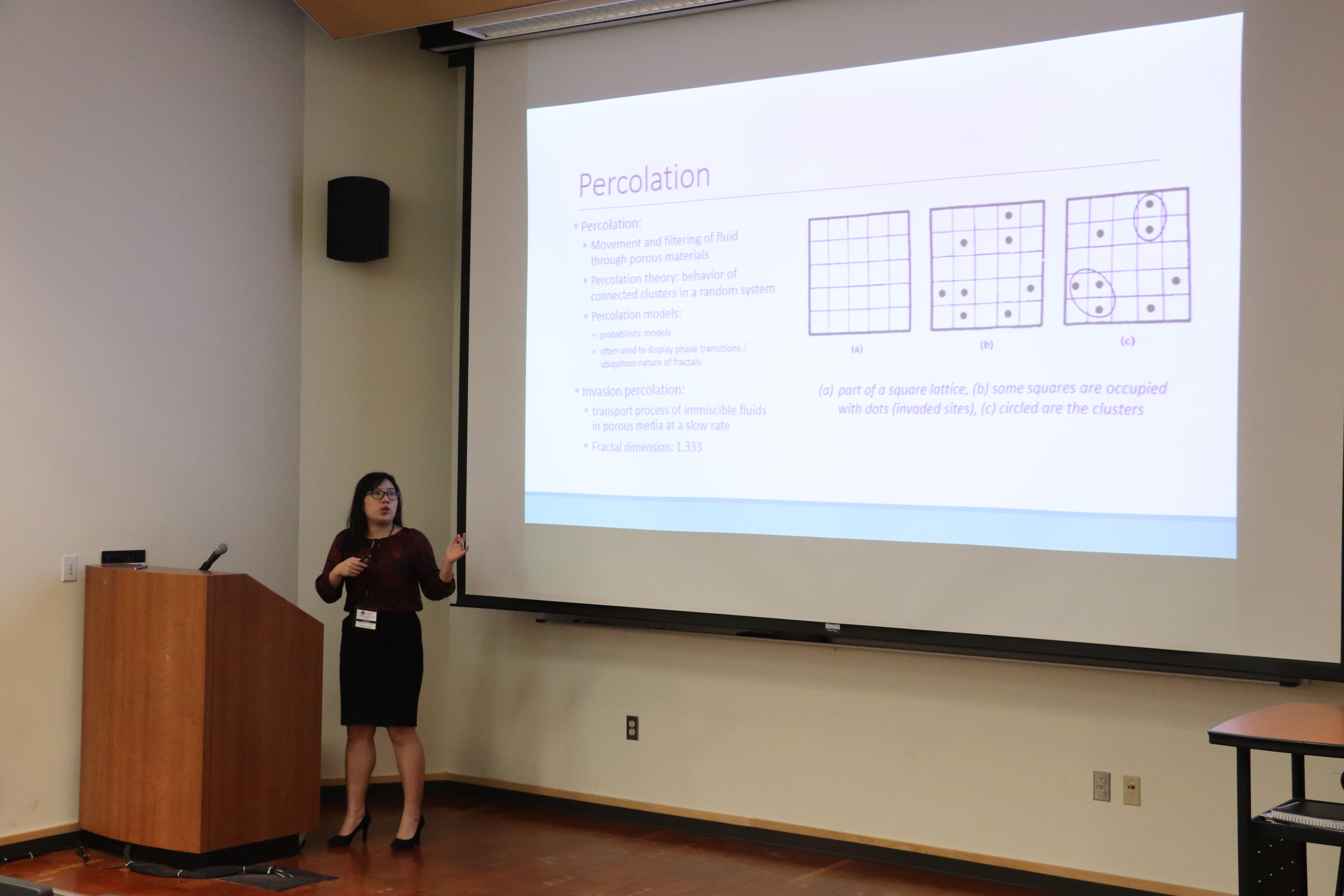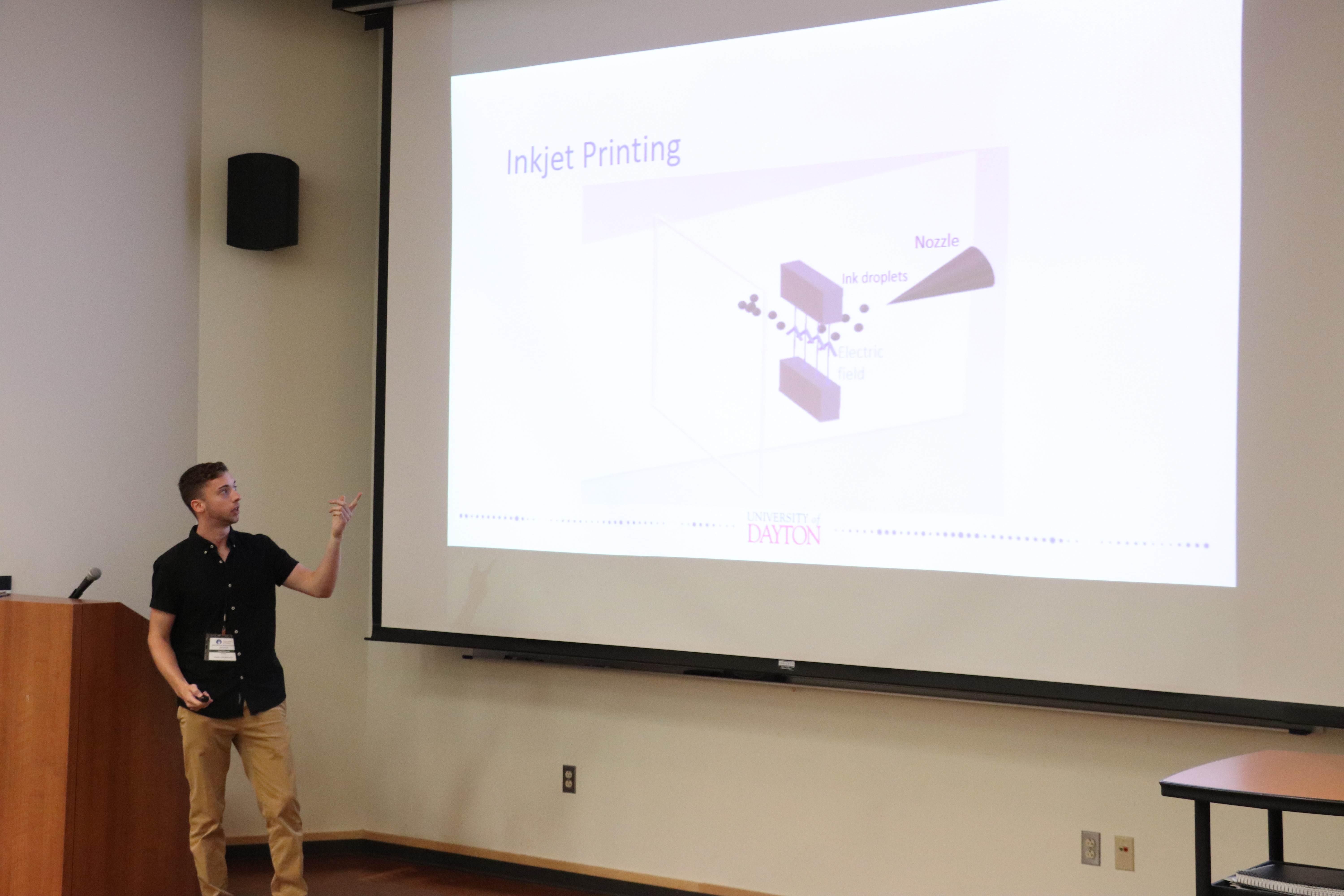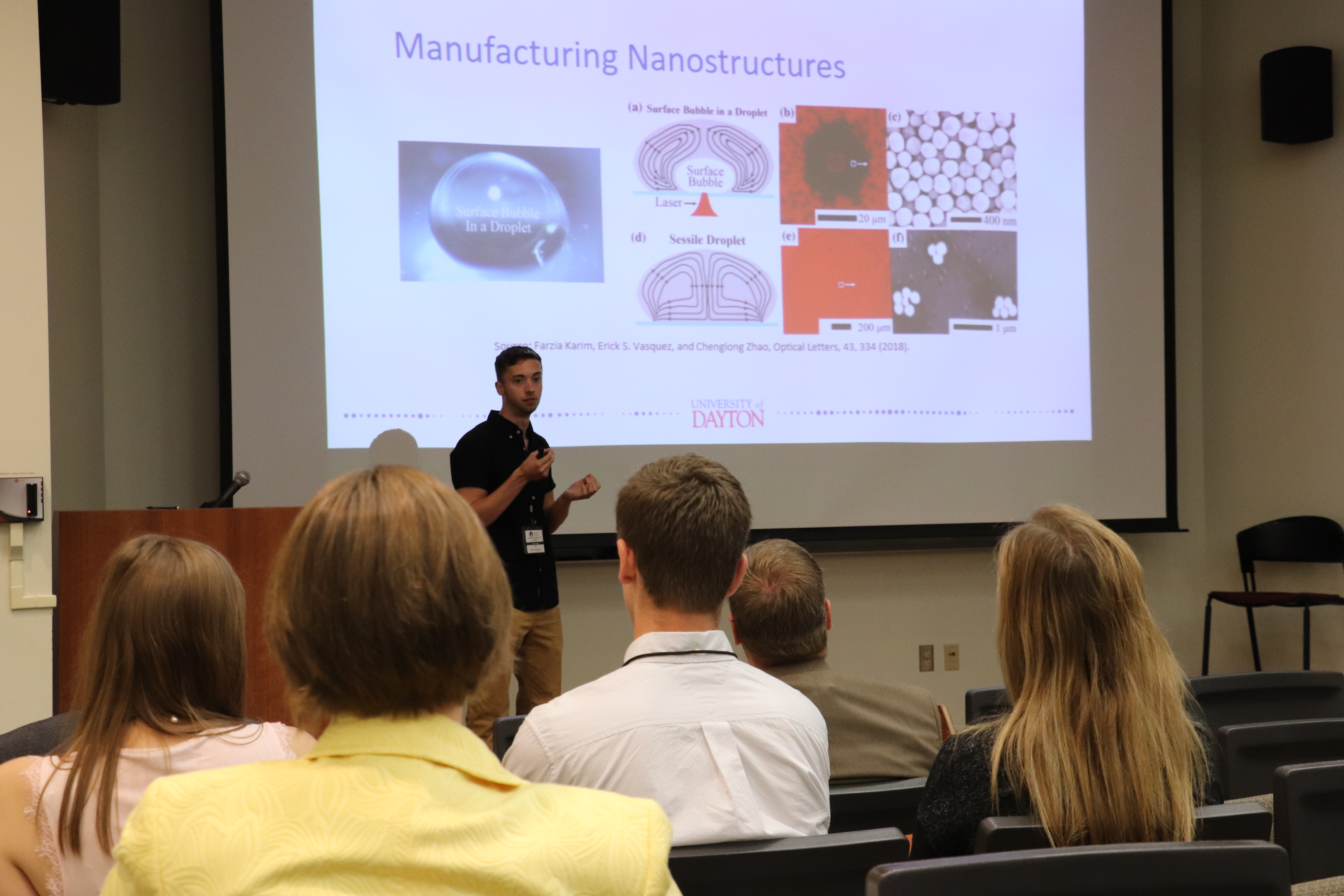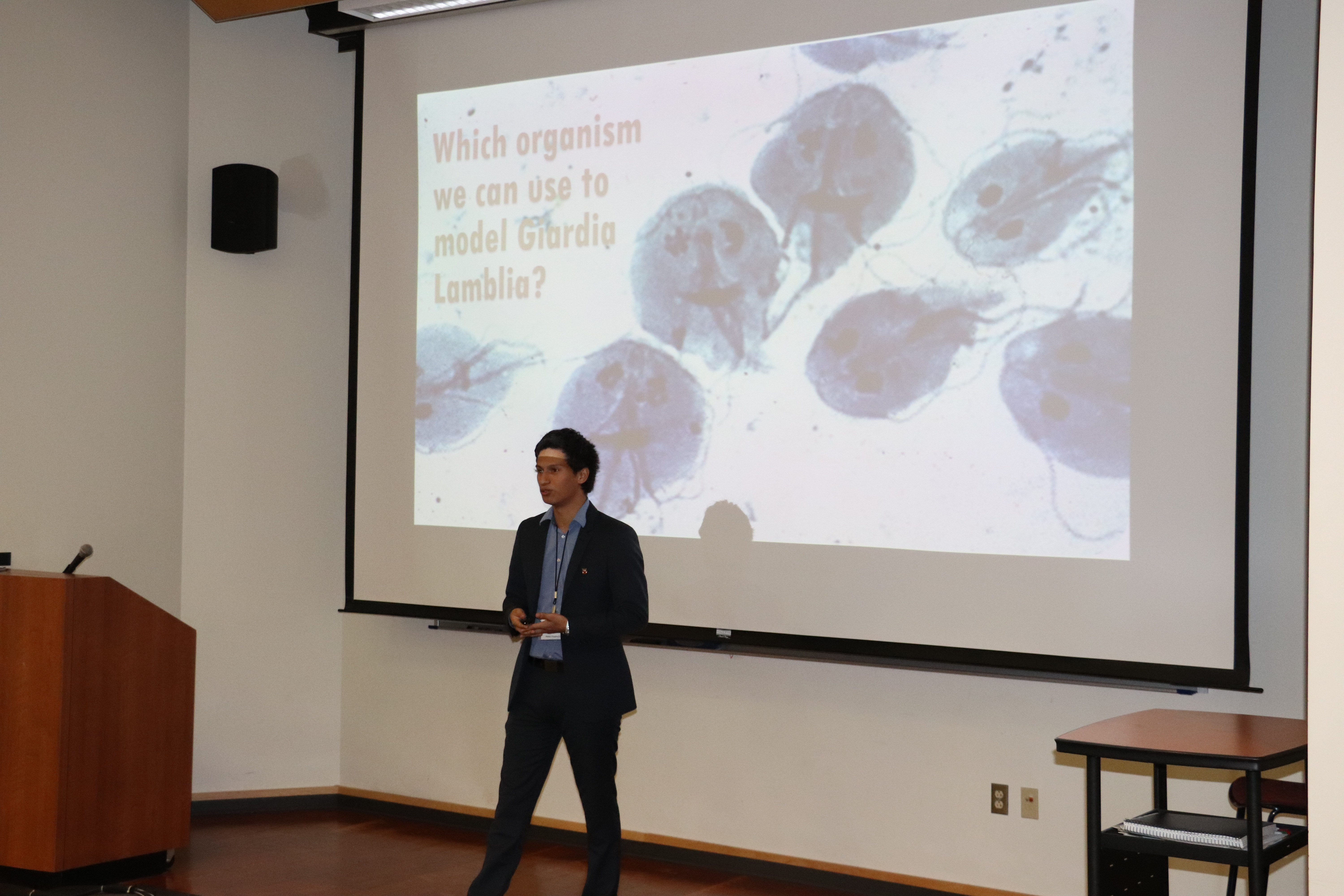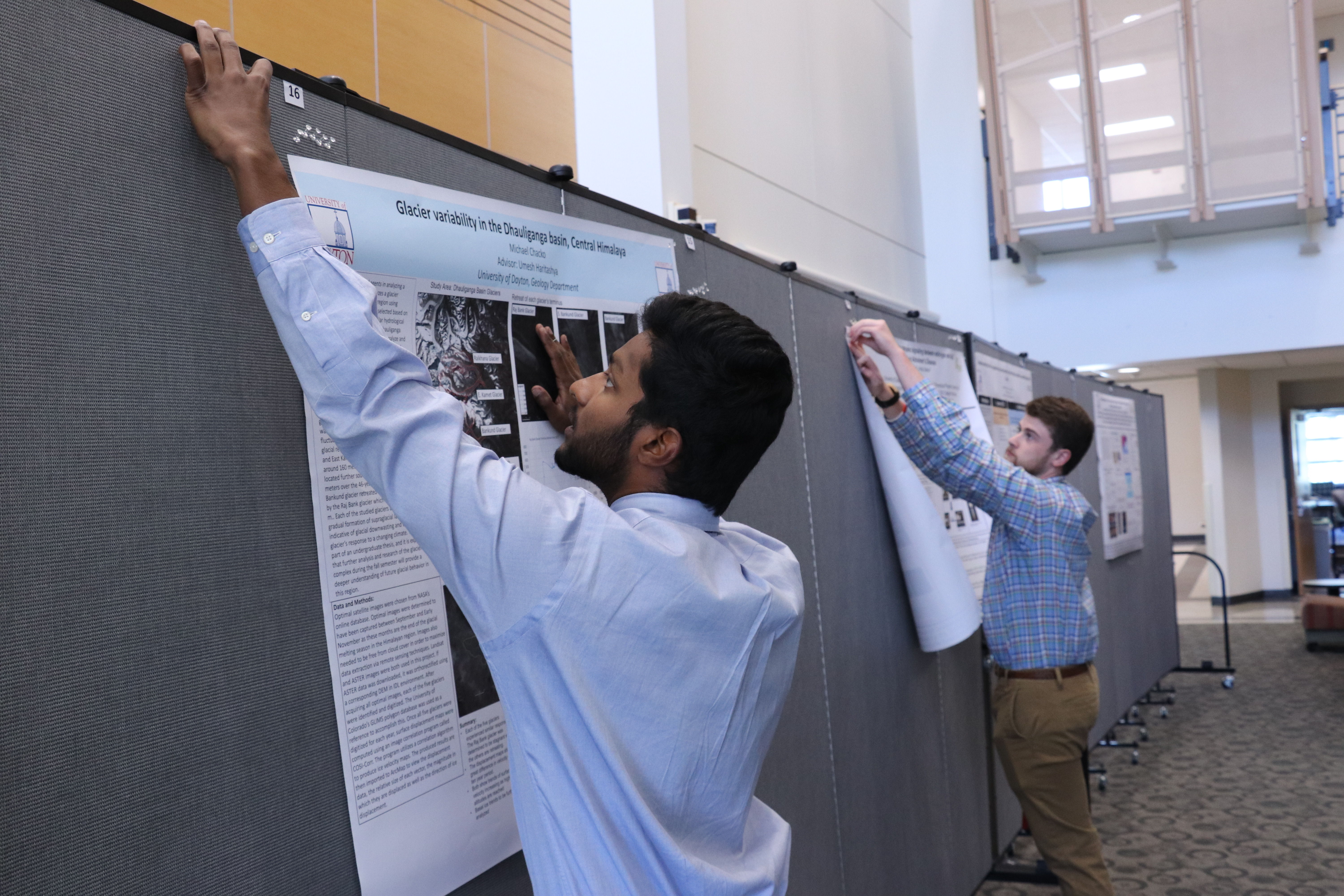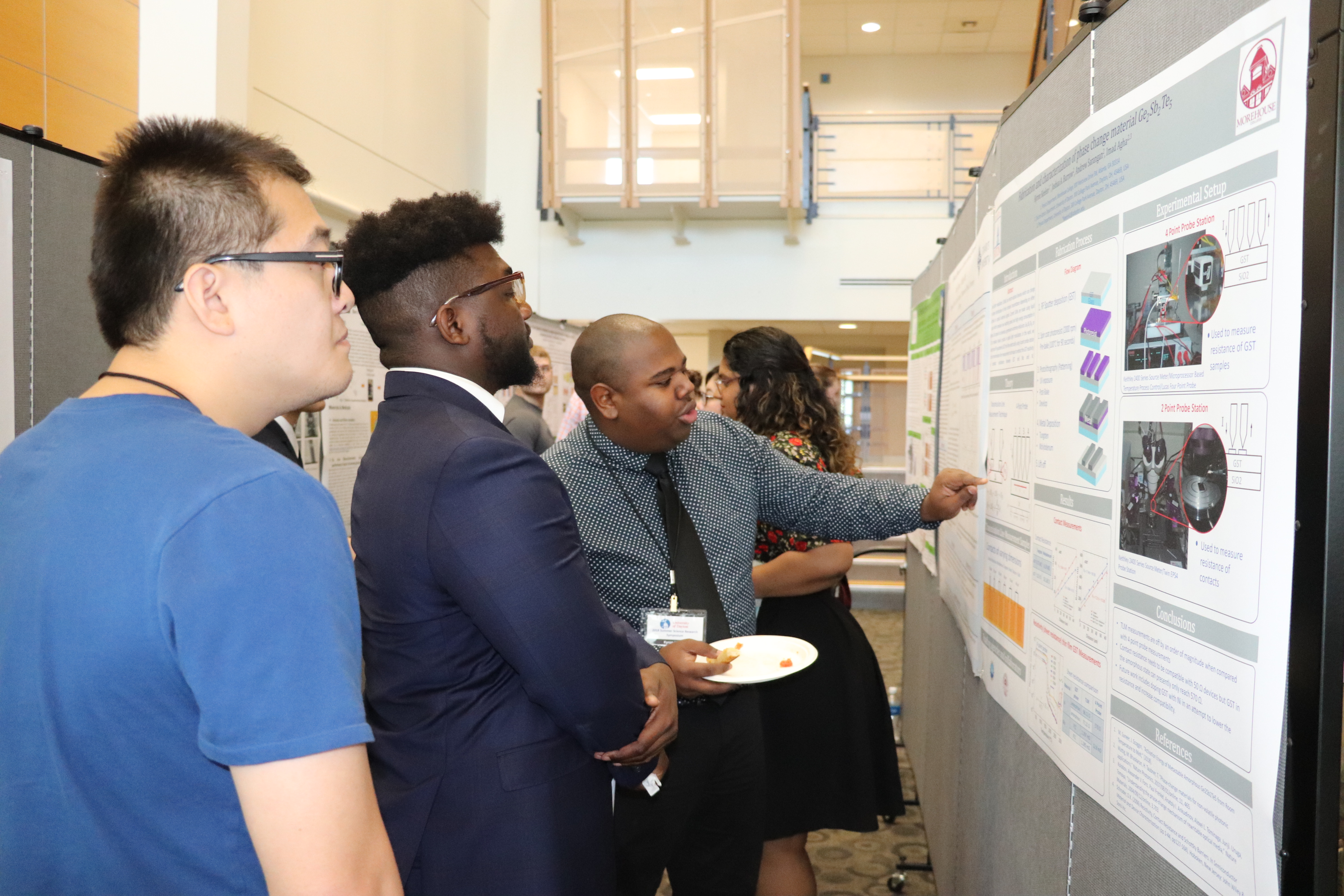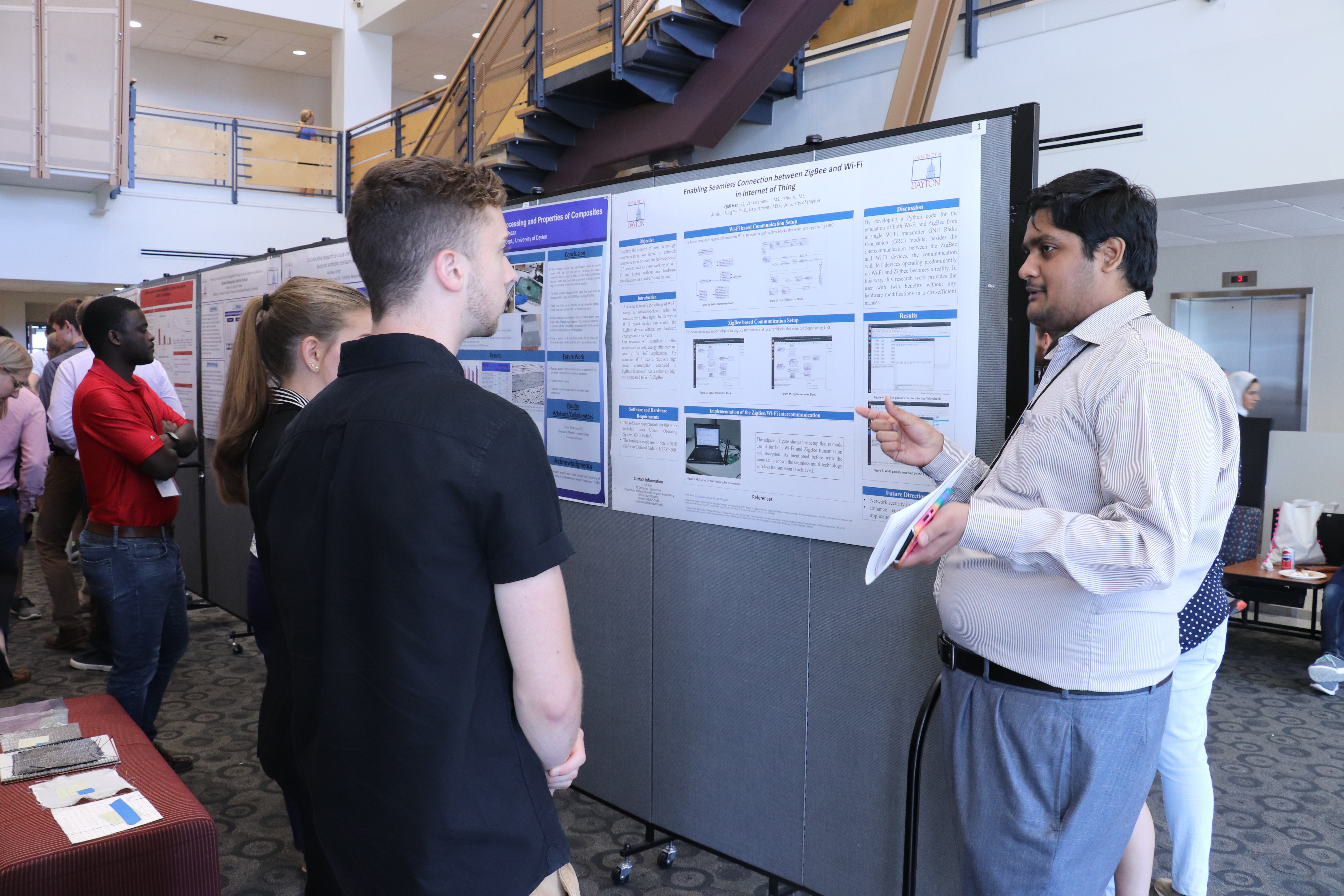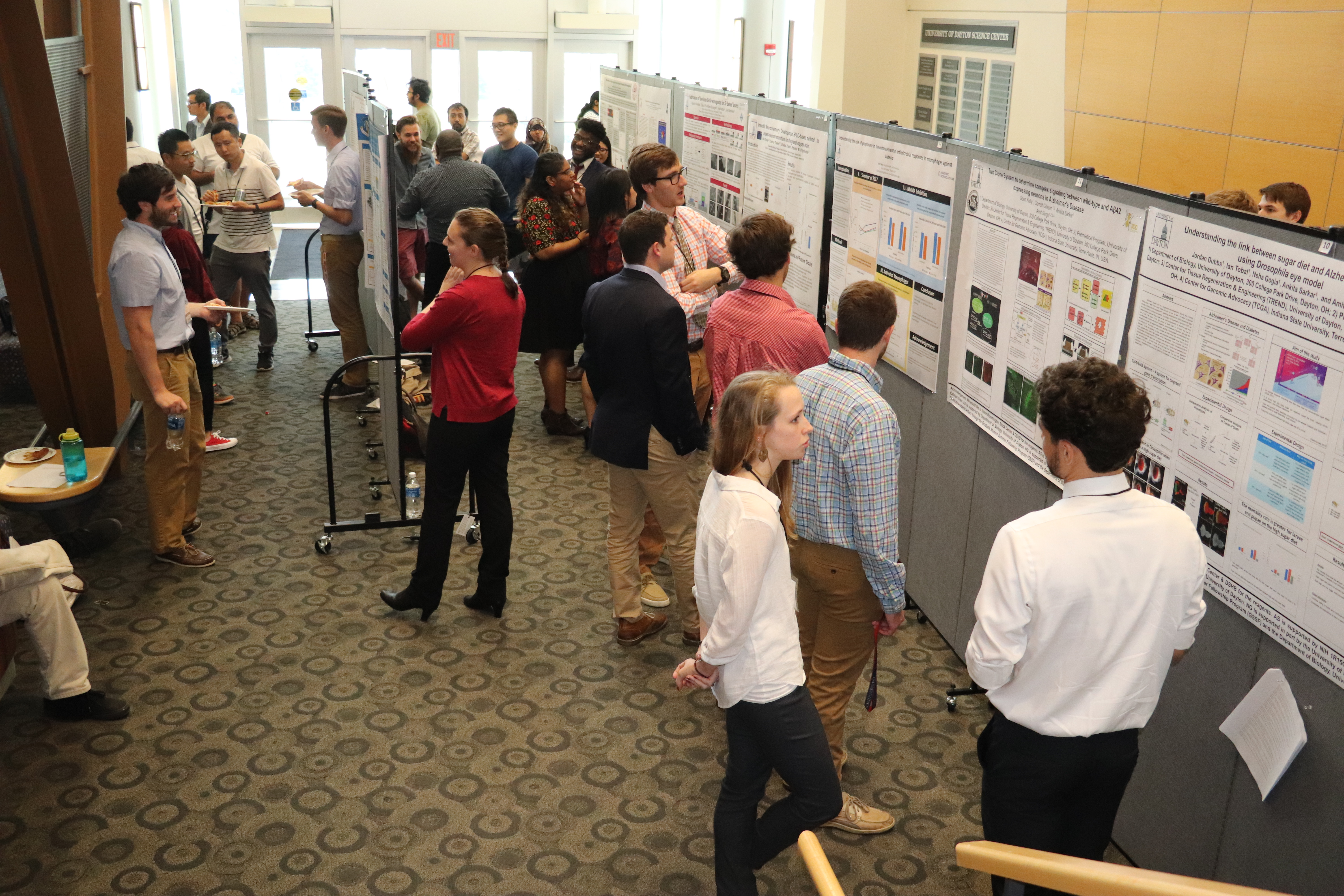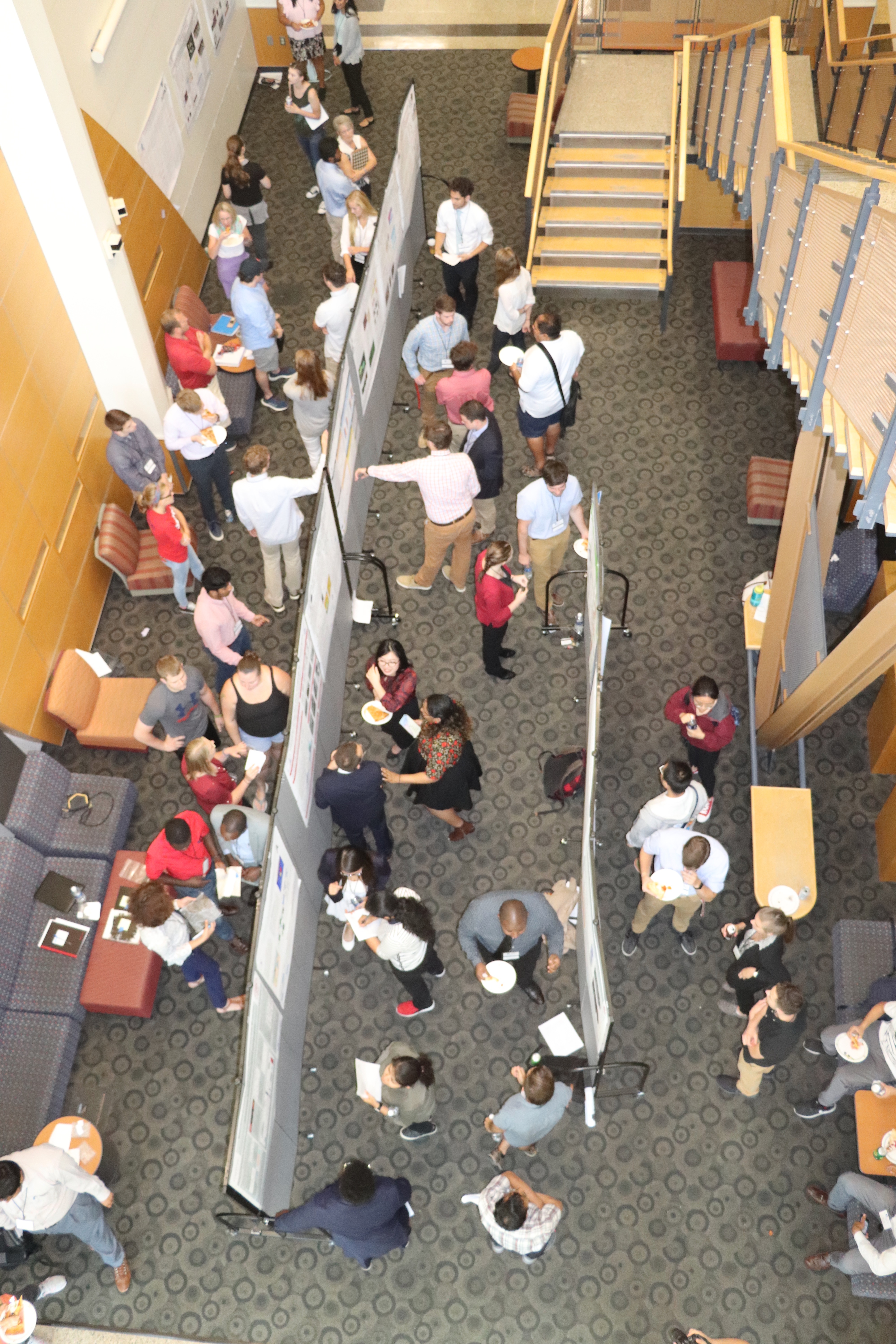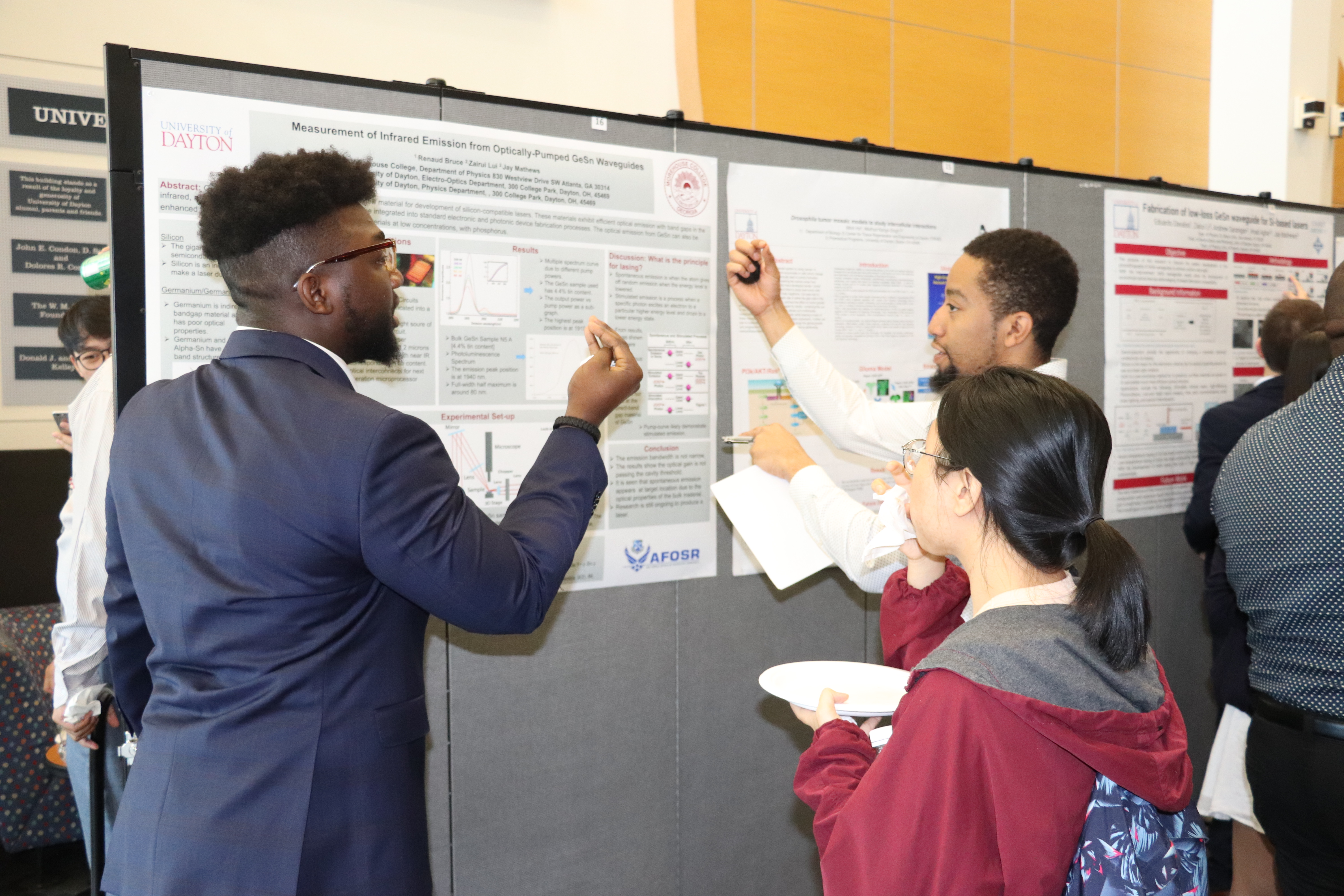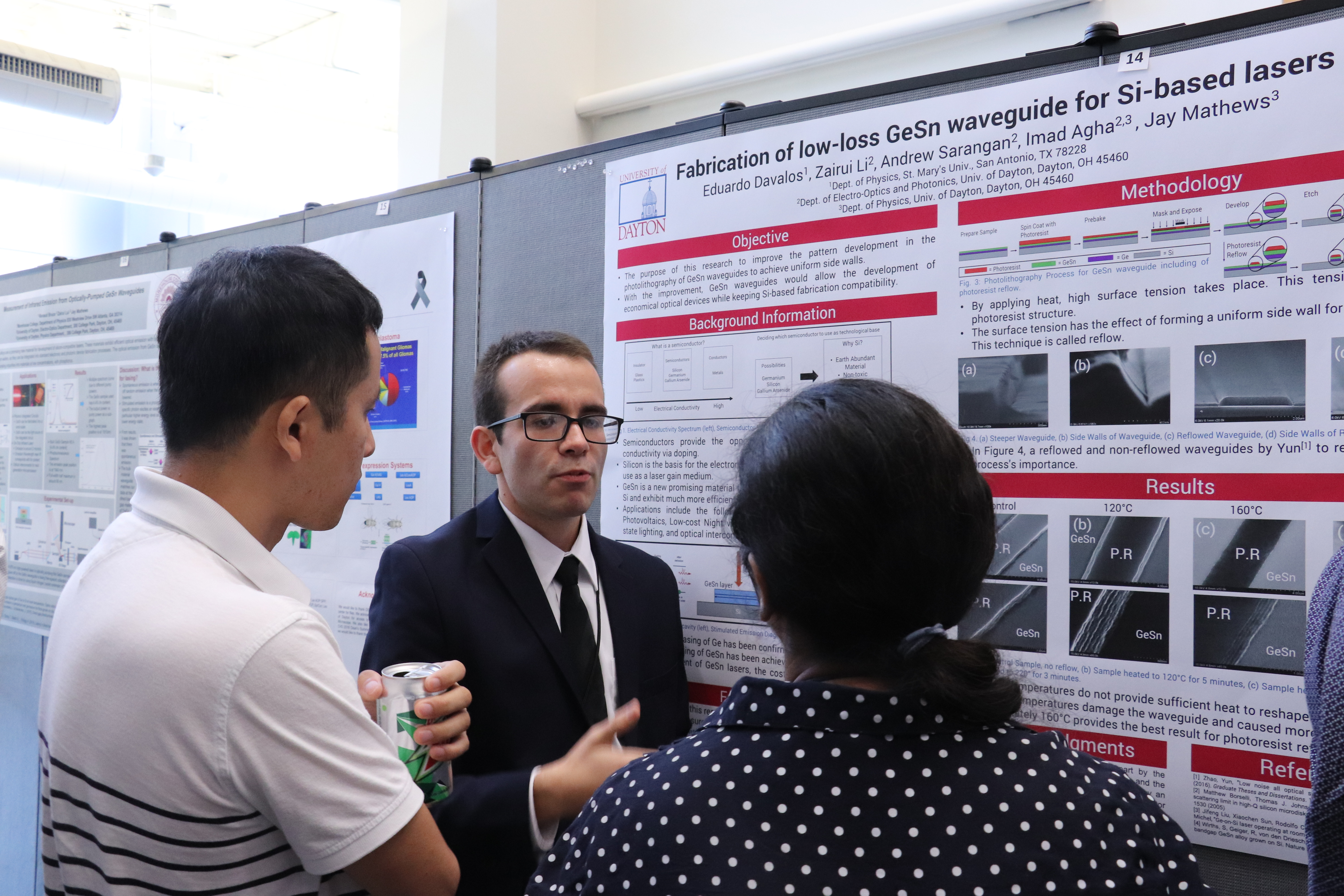College of Arts and Sciences Newsroom
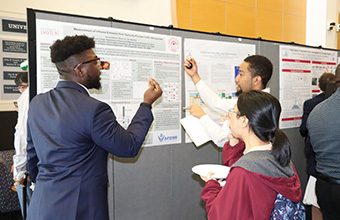
Physics 'Research Triangle'
The University of Dayton Department of Physics has partnered with St. Mary's University and Morehouse College to offer their students summer research opportunities in Dayton with access to facilities and funding that might not be available at the smaller, minority-serving institutions.
This summer, the pilot program provided research fellowships to six students. Two were from Morehouse, a historically black college (HBCU) in Atlanta, and four were from St. Mary’s, a Hispanic-serving (HSI) Catholic Marianist university in San Antonio, Texas. The students spent 10 weeks on the University of Dayton campus doing full-time, faculty-mentored research in physics and electro-optics.
The program — dubbed the “research triangle” by assistant professor and co-founder Imad Agha — allows St. Mary’s and Morehouse students to have a research experience that differs from their home institutions. It also increases diversity and inclusion in the University of Dayton’s physics laboratories, where the visiting students worked side-by-side with three Dayton undergraduates, under the guidance of five faculty members and nine graduate students.
“This program is for the common good,” said John Erdei, associate professor and Department of Physics chair. “The health of the physics profession is being enhanced by these students interacting in the lab. I consider that to be significant.”
For international students like St. Mary’s sophomore Josemaria Soriano, the fellowship was a rare opportunity to do funded summer research that combined both physics and biology. As a native of Lima, Peru, Soriano isn’t eligible for federal programs such as the National Science Foundation’s Research Experiences for Undergraduates (REU) because he isn’t a U.S. citizen.
“If it was not for the University of Dayton, maybe I couldn’t have done research this summer, like several international students who have outstanding academic records but almost no opportunities for developing their research skills,” Soriano said. “These are critical for getting admitted and succeeding in graduate school.”
Soriano is attending St. Mary’s on a full Marianist scholarship and triple-majoring in biophysics, chemistry and mathematics. In July, he won the award for best oral presentation at the University of Dayton’s annual Summer Science Research Symposium.
Morehouse senior Renaud Bruce presented a poster at the symposium, based on his research into silicon-compatible lasers in the lab of assistant professor and program co-founder Jay Mathews. Bruce enjoyed access to the University’s labs and equipment, and appreciated being mentored by doctoral students. He said the diversity in the labs also helped him to grow as a person.
“I haven’t been exposed to photonics before, or necessarily lasers,” said Bruce, an applied physics major from Jersey City, New Jersey. “The undergraduate research students at Morehouse are doing more theoretical things. I got to work with the equipment hands-on and that’s what made it worthwhile. And the fact that everyone was so kind and open to teaching me, as well.”
Mathews and Agha have brought one Morehouse student to campus almost every summer since they both joined the University of Dayton faculty in 2013, with the goal of establishing a physics partnership program with an HBCU. In addition, Agha’s $197,768 National Science Foundation grant awarded in 2017 included an REU allocation to bring a student from another institution to campus, which helped fund one of this year’s students from Morehouse College.
The program was expanded this year to also include four students from St. Mary’s — one of the University of Dayton’s two Marianist sister universities.
The Department of Physics awarded each student a $5,000 research stipend and also paid for summer programming, which included weekly luncheon speakers. The College of Arts and Sciences provided the students with summer housing.
Mathews, Agha and Erdei plan to seek external funding to continue the partnership beyond this year and build it into a formal program.
In addition to providing critical research opportunities that can serve as the foundation for senior capstone projects at the students’ home institutions, the program also benefits the Department of Physics.
“Scientifically speaking, we got quite a bit of work from them,” Agha said. “They are really good students. We didn’t have to invest much in their training. They already had good experiences and were able to immediately work in the lab.”
It’s also a good recruitment tool for the University’s graduate programs in engineering and electro-optics. In 2017, Morehouse graduate Joshua Burrow received his master’s degree in electro-optics from the University of Dayton, where he is now pursuing his doctorate. Burrow first learned about Dayton from a fellow Morehouse student who participated in the summer research program.
“If the summer program hadn’t happened, we wouldn’t have met Josh,” Agha said.
- Dave Larsen, communication coordinator, College of Arts and Sciences

